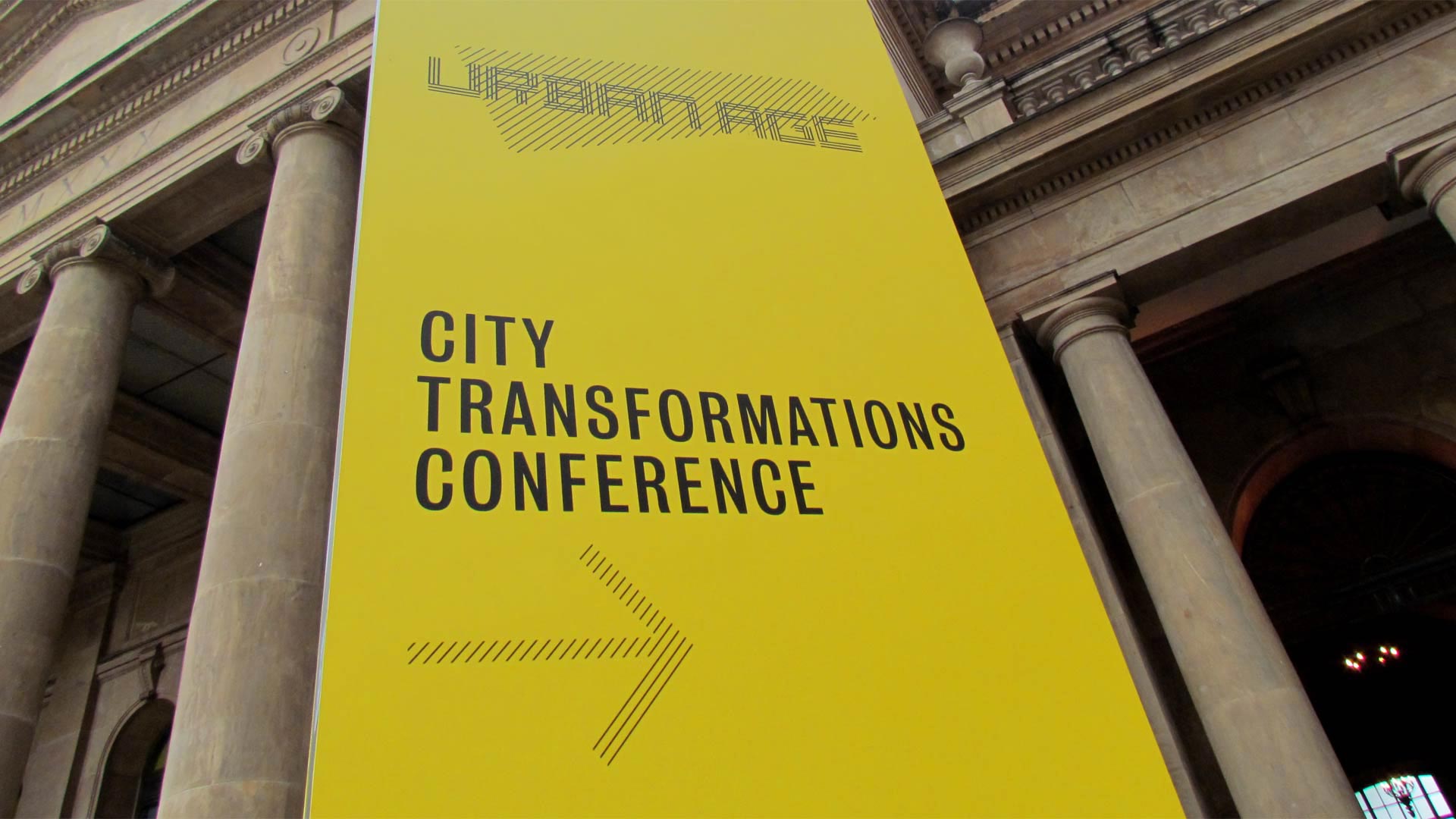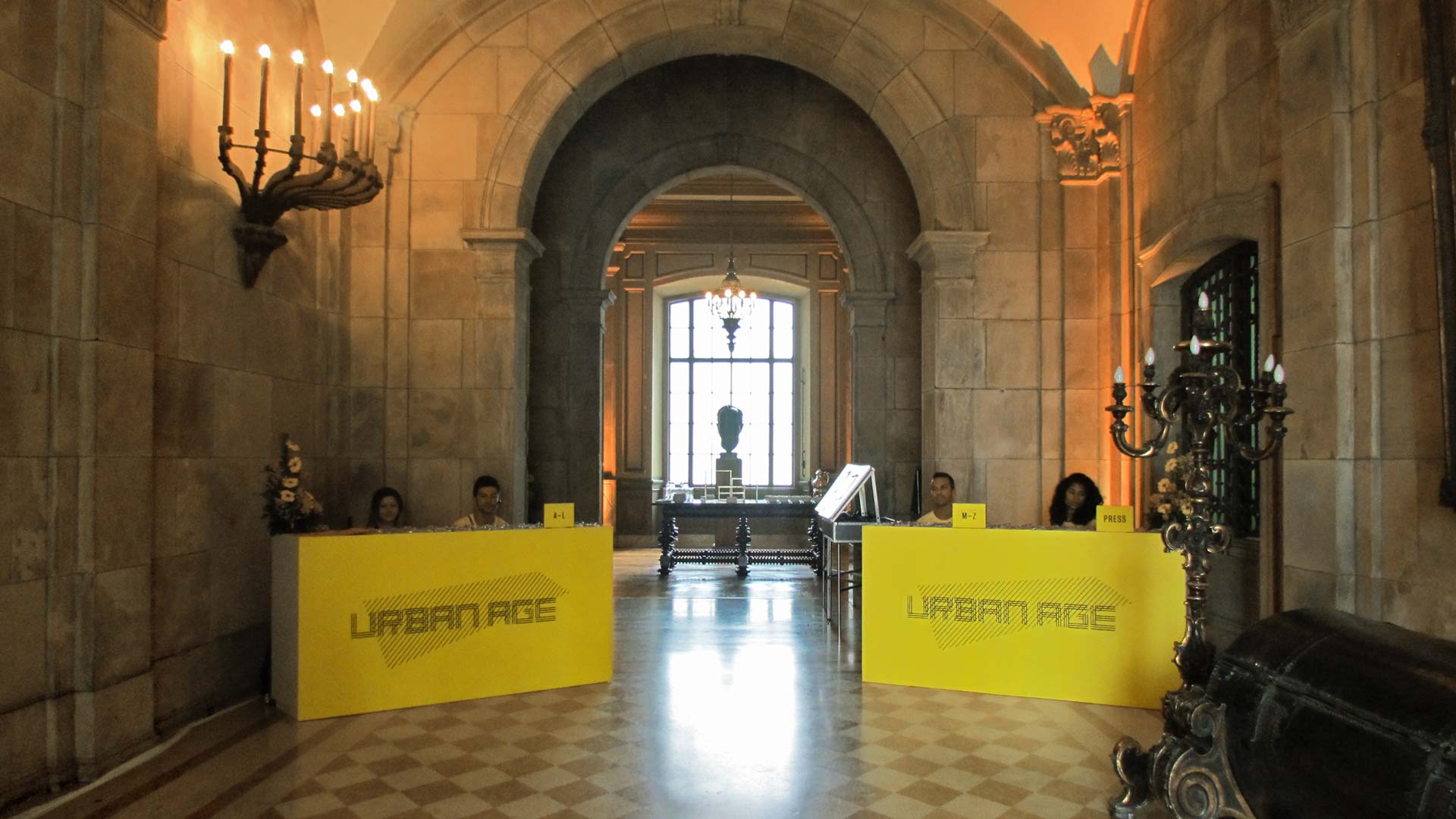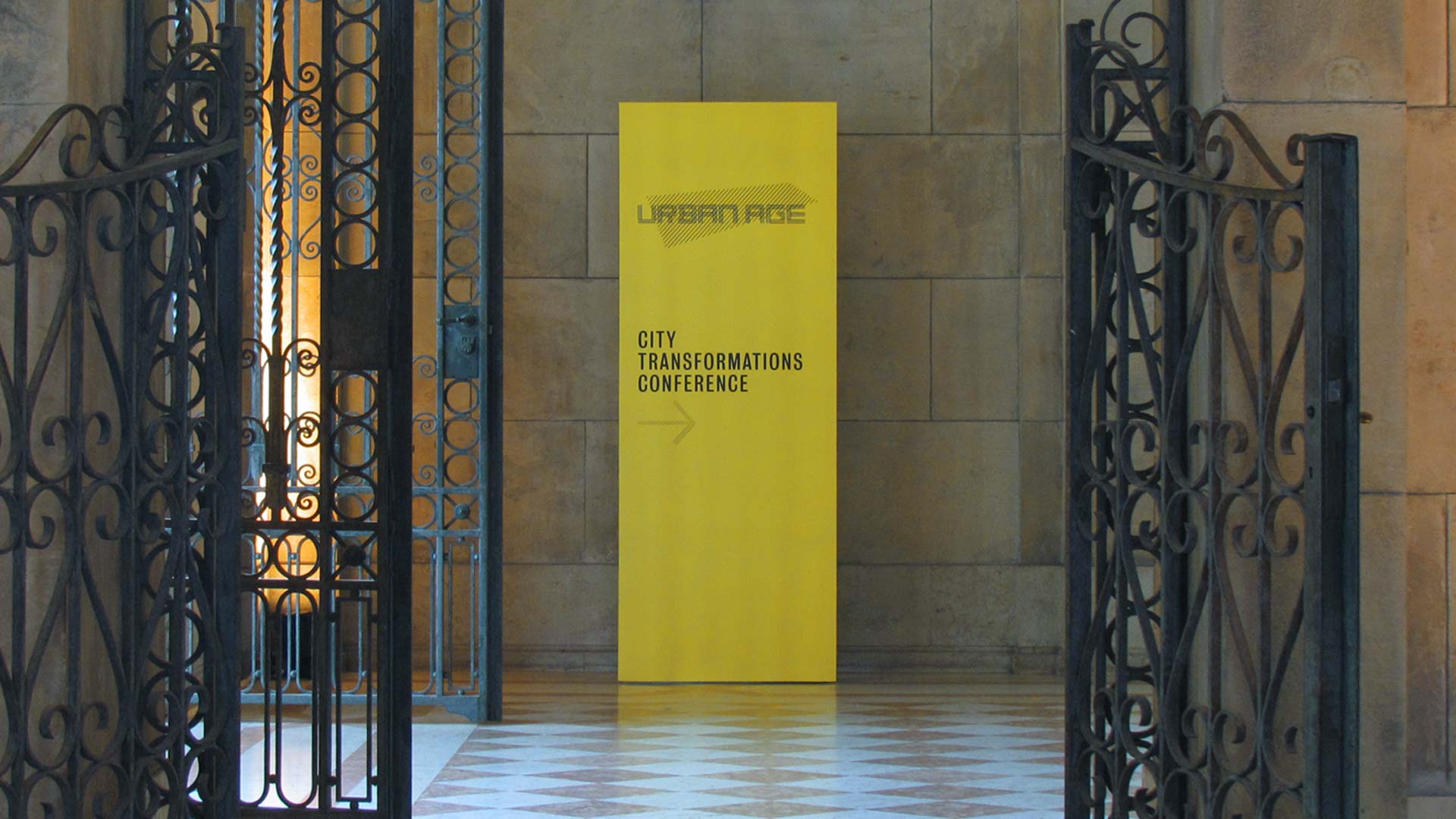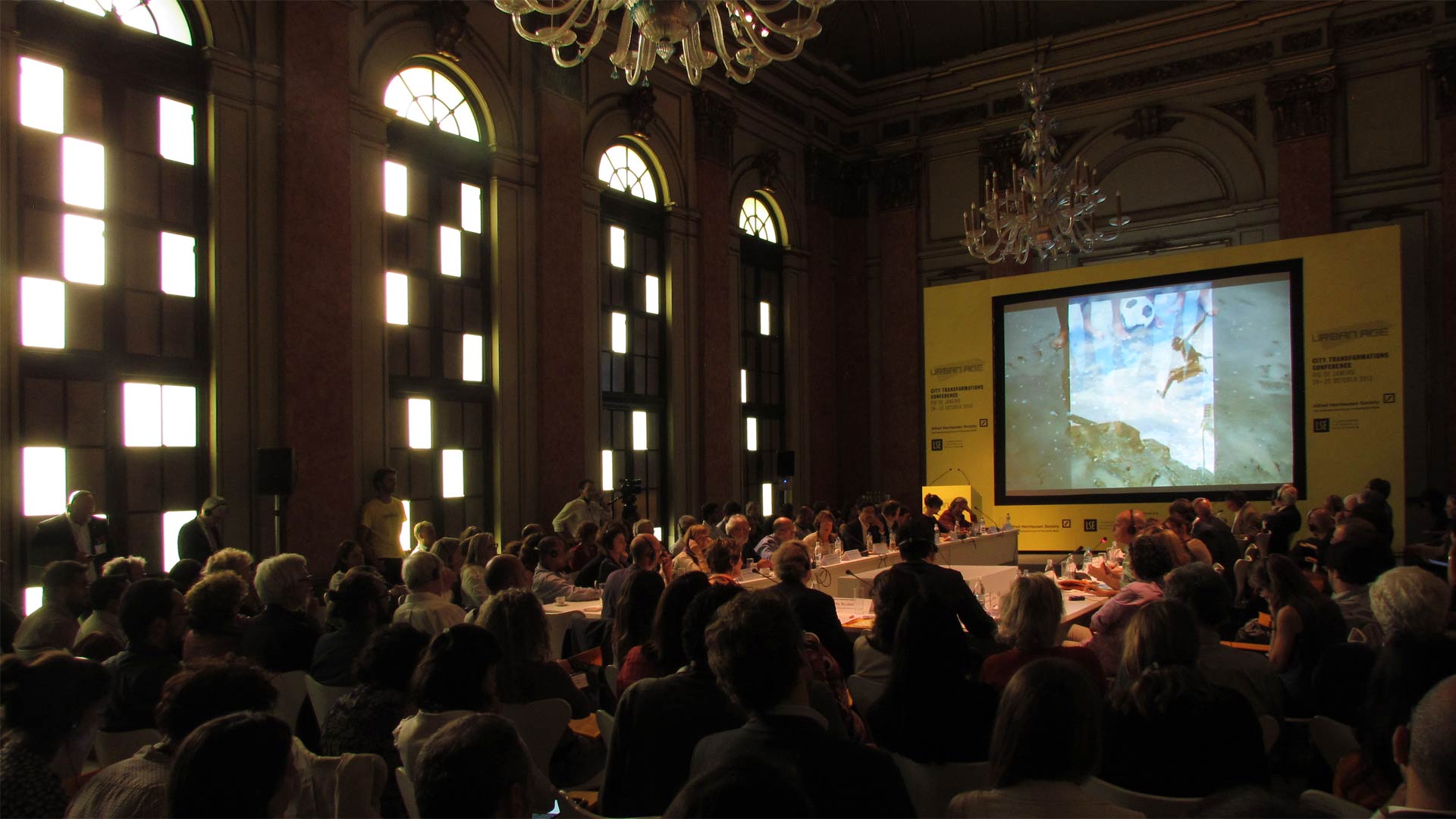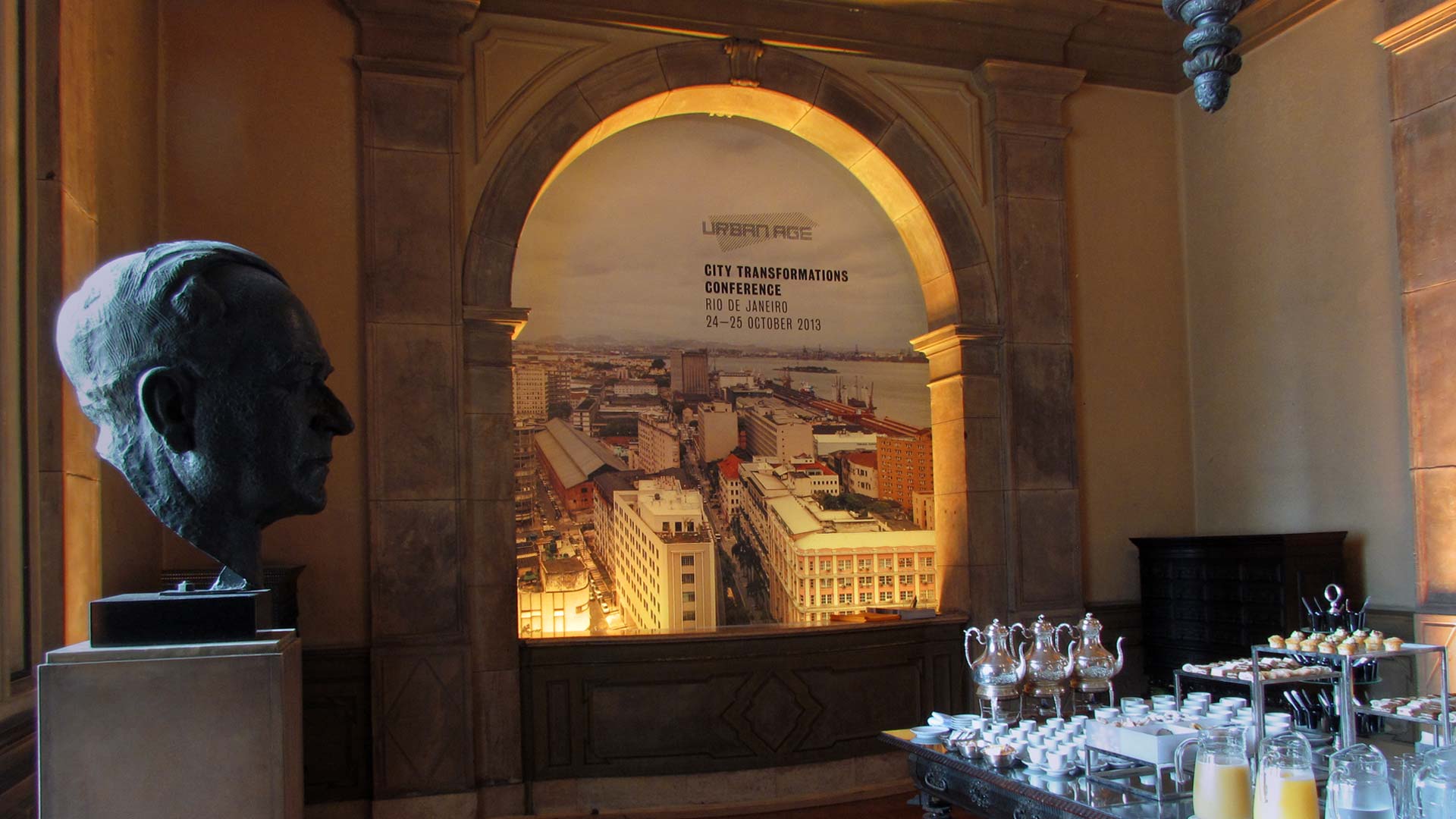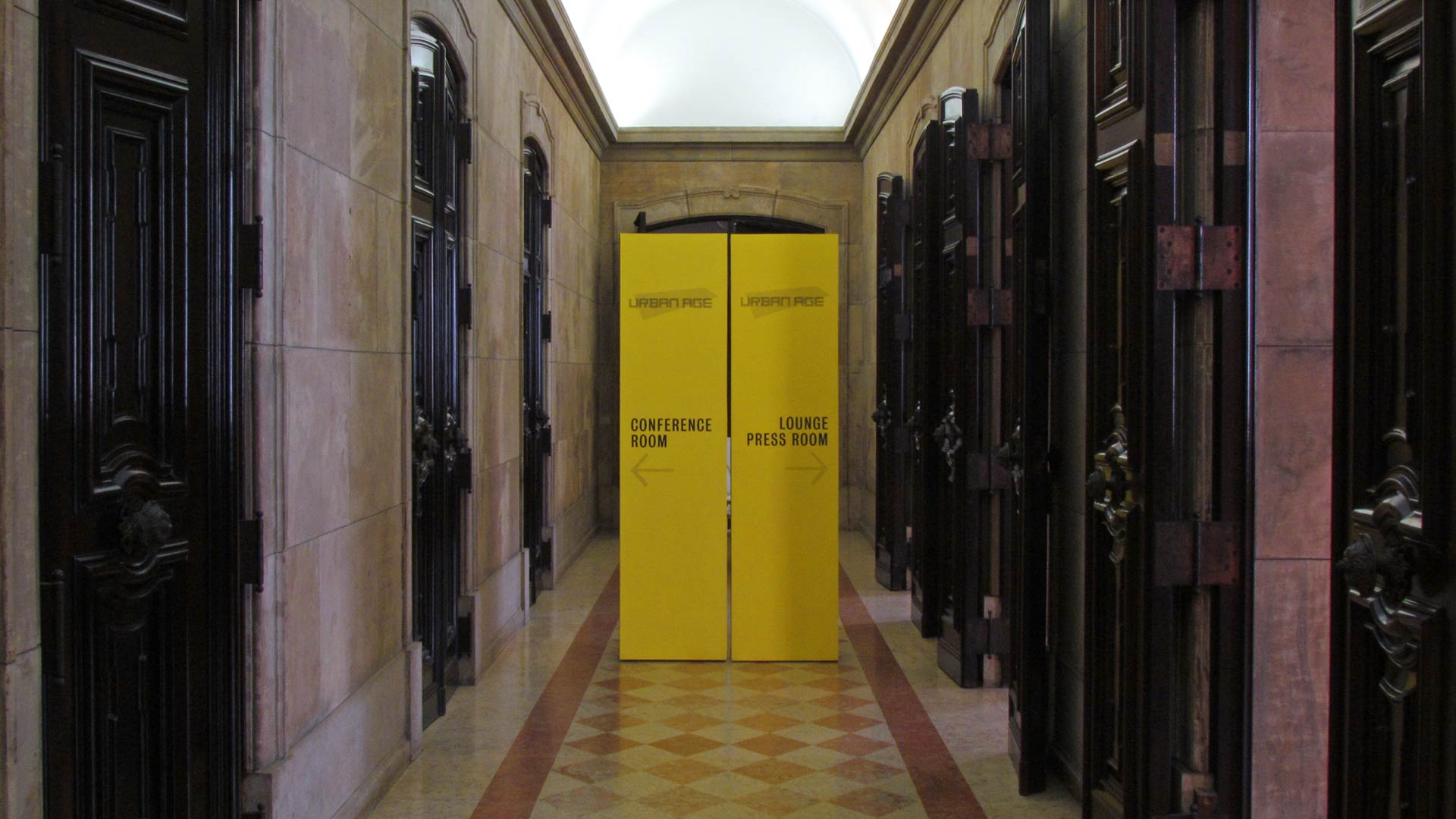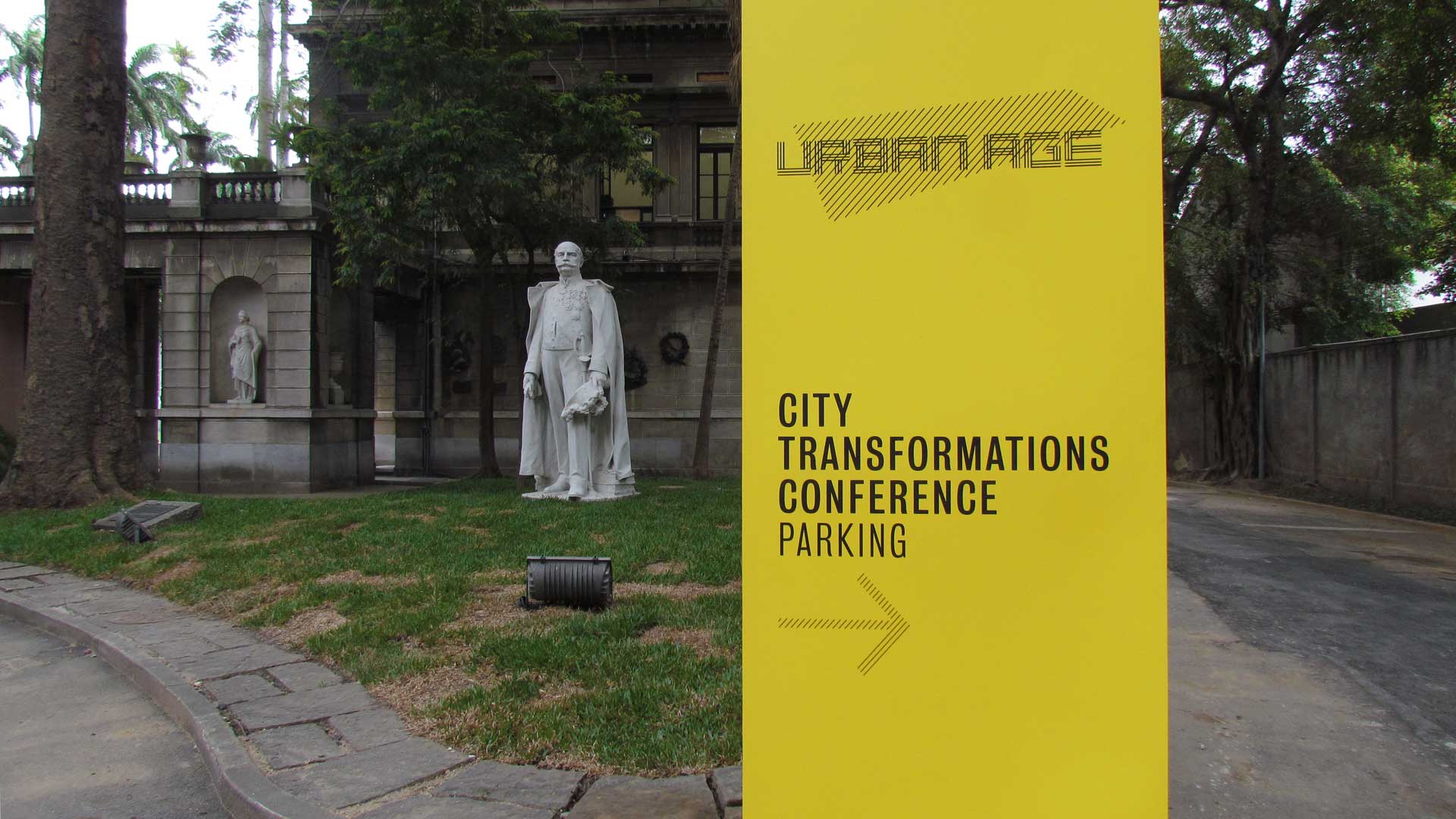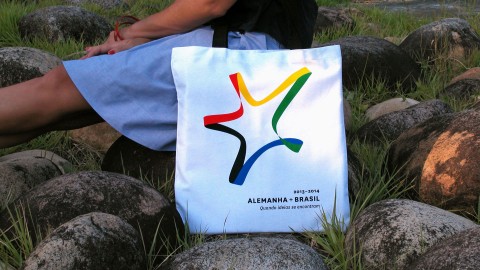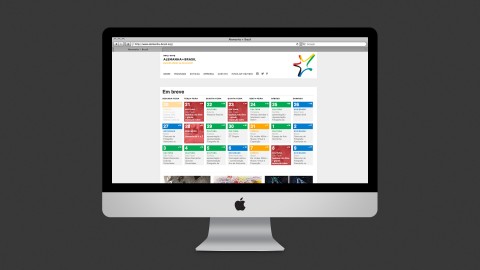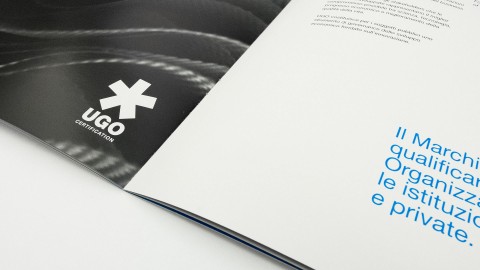Urban Age Conference 2013 Rio de Janeiro
The Urban Age Programme, jointly organised by Deutsche Bank’s Alfred Herrhausen Society and the London School of Economics is an international investigation of the spatial and social dynamics of cities. Following events in New York, Berlin, Shanghai, Johannesburg and Mexico City, the 2013 Urban Age City Transformations Conference was held in Rio at the Palácio do Itamaraty.
The task for the Thomas Manss & Company designed event signage and graphics was to combine the contemporary conference identity with the classical architecture. With large windows overlooking a sun-drenched courtyard, one particular challenge was to control the amount of daylight entering the conference room where lectures were supported by screen projections. Each individual window pane was covered with either blackout or yellow transparent vinyl creating an effect reminiscent of stained glass windows. This symbiosis of the classical interior and a modern intervention has proved to be such a success that it has been adopted by the venue for future events.
